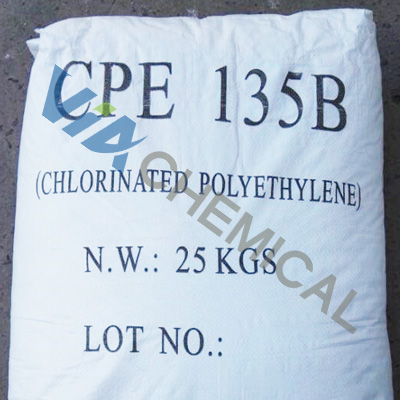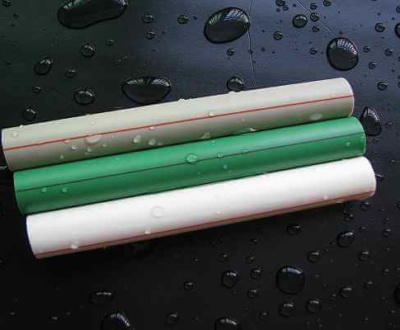Plasticization is the key process in the fabrication of semi-finished and finished chlorinated polyvinyl chloride (CPVC) products. The quality of plasticization is directly related to the intrinsic quality and surface quality of the final products, whether they are produced through extrusion or injection molding. Therefore, the interaction among processing technology, equipment, and techniques is crucial to obtain CPVC products with good plasticization quality. The following points can provide insight on the improvement of plasticization quality during the processing of CPVC:
The chemical formula of CPVC
CPVC (PVC-C) is the chlorinated product of polyvinyl chloride (PVC). The characteristics of PVC can be modified through chlorination to achieve two different purposes: First, PVC is modified to improve heat distortion temperature, increase rigidity, and improve chemical stability. Second, PVC is modified to improve material solubility. PVC with improved material solubility is commonly known as perchlorethylene and is mainly used in the production of adhesives, coating materials, and polyvinyl chloride fiber. The water-suspension chloride method, or slurry method, is the most common chlorination method for PVC. CPVC has a molecular structure of –CHCl–CHCl–CH2–CHCl, and its performance depends on two factors: chlorine content and distribution in the CPVC molecular chain. Therefore, CPVC products with the same chlorine content but different chlorine distribution can provide different performances.
The factors that affect the development of plasticization quality during molding
The extrusion molding of CPVC is discussed in this article. CPVC is processed at high temperatures given that its melt viscosity is at least twice that of PVC. The release of HCl due to thermal decomposition can complicate molding and cause equipment corrosion. Therefore, achieving the desired plasticity (plasticity in place) of the highly viscous CPVC is the key point in extrusion processing. The formulation of CPVC for extrusion processing has the following requirements:
- Thermal stabilizer
Given the high processing temperature of CPVC, the amount of heat stabilizer used in the formulation of CPVC is considerably higher than that used in the formulation of PVC. The use of traditional tri-salt and di-salt heat stabilizers is unsuitable for CPVC production. At present, the relatively mature heat stabilizer for CPVC production is a series of composite lead stabilizers with lubrication.
- Lubricants
The use of conventional paraffin wax, stearic acid, and metal soap lubricating systems is inappropriate in CPVC production given the high melt viscosity of CPVC and the high risk of melt fracture during injection molding. The metal surface that tends to adhere to hot post-processing equipment, particularly to heads and molds, during extrusion must be eliminated through the addition of an external lubricant to the CPVC formulation. The added external lubricants and CPVC resins should be incompatible.
In CPVC production, especially during the injection process, friction between CPVC resins under pressure generates heat, which is detrimental to the properties of the final CPVC product. Thus, heat generation through friction needs to be controlled. Internal lubricants can reduce the friction between CPVC resins during processing. The internal lubricant should be compatible with the CPVC resin.
The balance of internal and external lubrication is an important issue. An excessive amount of internal lubricants will seriously affect plasticization and destroy product quality. Meanwhile, an excess of external lubricants will cause lubricant precipitation and even produce screw slip and other serious effects that affect the regular production process. OP wax in saponification wax (montan wax) is an ideal combination of internal and external lubricants.
- Processing auxiliaries
Processing auxiliaries must be used in the extrusion and injection molding of CPVC to improve plasticization quality and to increase the low-temperature impact resistance and toughness of CPVC materials. The flow unit remains the primary particle in CPVC even at the temperature of the viscous flow (195°C–205 °C). Thus, the fine particles of the resin exhibit poor interaction. Heat transfer is also poor and results in melt fraction and CPVC products with poor quality. ACR is a processing auxiliary for plasticization and can be dispersed in the CPVC melt into a mesh structure unit. ACR is evenly distributed between fine CPVC particles given its small size, which is less than 0.01 μm. Under the action of shear force, the friction between CPVC particles is increased, the heat transfer and mass transfer of the melt system are promoted, the torque is increased, the plasticizing process is accelerated, and the quality of plasticization is improved.
CPVC products have low-temperature brittleness and poor impact resistance. Therefore, the formulation and production techniques of CPVC must be adjusted to increase the toughness and impact resistance of CPVC products.
About VIA Chemical
VIA Chemical co., Ltd is a China-based CPE CPVC Series Chloride manufacturing expert.
Request a free quote
VIA is committed to supplying high quality chlorinated polymer materials with high ratio of price to quality.
Subscribe to our newsletter!
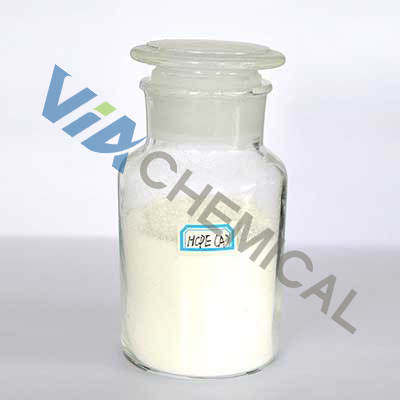
CPVC J-700
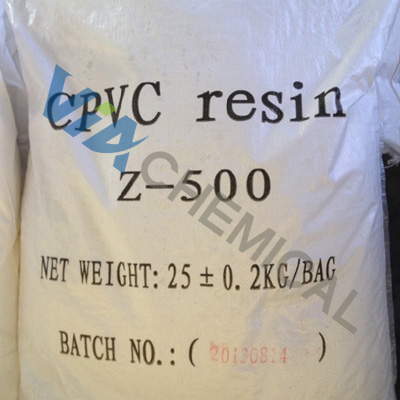
CPVC Z-500
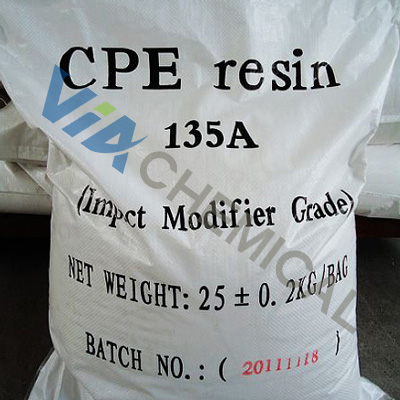
CPE 135A
